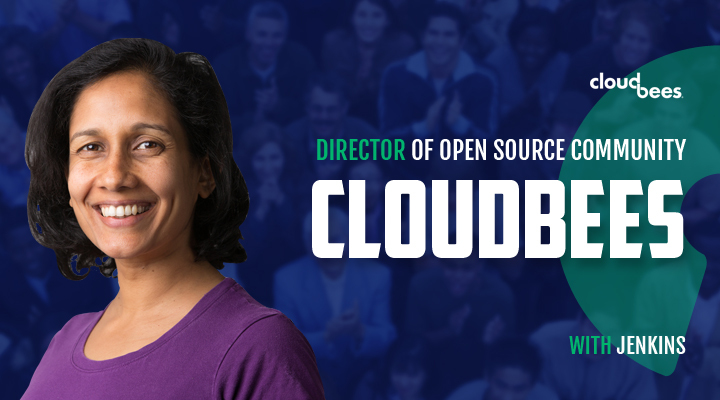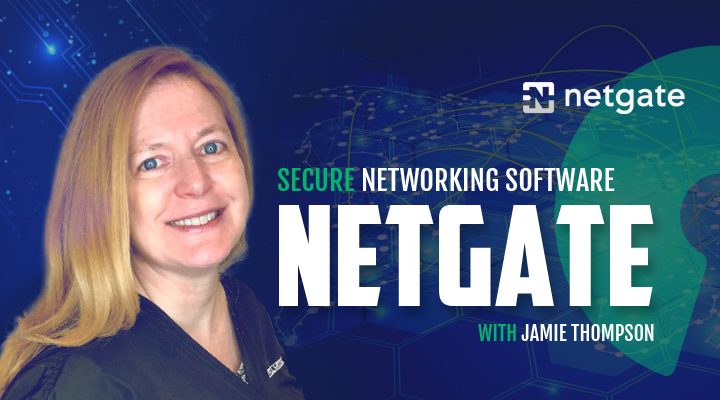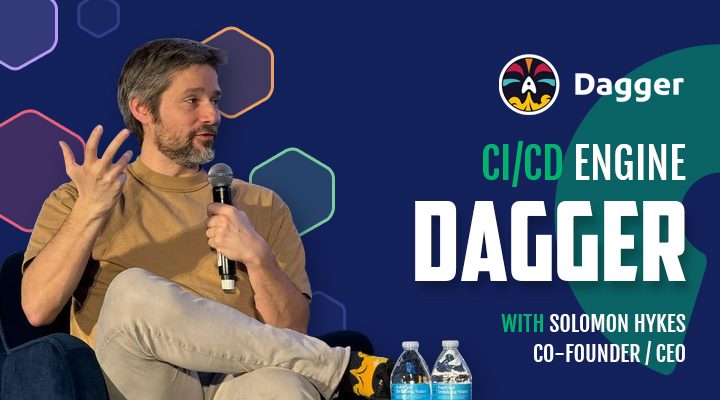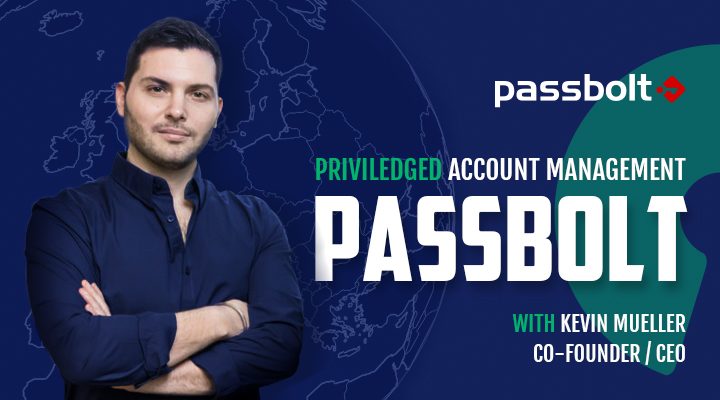
Episode 47: Jenkins Software Delivery Automation and Management with Tracy Miranda, Director of Open Source Community CloudBees
Podcast: Play in new window | Download
Subscribe: RSS
Intro
Michael Schwartz: Hello and welcome to Open Source Underdogs. I’m your host Michael Schwartz, and this is episode 47 with Tracy Miranda, Director of Open-Source Community at CloudBees.
CloudBees is a company behind Jenkins, the famed project, which is used to automate building, testing and deploying software.
Many commercial and open-source projects use Jenkins as part of their continuous integration and delivery infrastructure, including my company Gluu.
Jenkins was forked from a project called Hudson, started by Sun Microsystems in 2005. After Oracle acquired Sun, Hudson was forked and rebranded as Jenkins.
Tracy has been an entrepreneur, a developer, a technologist for around 20 years. She was active in the Eclipse community, serving on the board of directors. She’s also one of the founders of the Continuous Delivery Foundation, which operates under the Linux Foundation.
Hopefully that gives you a little background, so let’s get on with it. Here’s Tracy. Thank you so much for joining today.
Tracy Miranda: Thanks, Mike. It is my pleasure to be here today.
Joining CloudBees
Michael Schwartz: For 10 years, you founded and ran your own consultancy,
specializing in Eclipse development – how did you end up getting involved in CloudBees?
Tracy Miranda: Yes. I think the
common thread there is definitely open source. So, I think that’s something
early on in my career I’ve always been drawn to, especially because of the innovation
that you find with open-source communities. And it came at a time I was looking
to just make a change in the career and focus a bit more on some of the
community building aspects.
And as I was talking to people out in the industry, I got introduced to Kohsuke Kawaguchi, who’s the creator of Jenkins, and at the time was the CTO of CloudBees. And the more he talked about the next stage of CloudBees, and what he wanted to do with Jenkins, the more exciting it sounded to me, so I could not resist the opportunity to join his team and lead the open-source team and try that future direction.
History of CloudBees
Michael Schwartz: So, for the non-geeks in the audience, can you talk a little bit about the history of Jenkins, and how that impacted the development of CloudBees?
Tracy Miranda: Yes, yes. So, Jenkins is a built automation server. It is most commonly used for continuous integration and continuous delivery, which are big parts of delivering software. So, it’s a tool that’s been around for 15 years. Many might know it originally in its first incarnation as Hudson, but it evolved over the years and became Jenkins and became very rapidly adopted by developers and focused on delivering software everywhere, just because it gave you a lot of flexibility.
And it was the first tool that sort of helped you integrate and build your software. And it was really what we’d say is the start of this whole field of developer productivity engineering.
And around it, so companies like CloudBees emerged, offering more Enterprise version. So, when it came to scaling or features around governance and securities, and CloudBees would offer Enterprise Jenkins. And that’s just sort of evolved and evolved, and now the whole space is currently really doing very well as we deliver more and more software every day.
CloudBees Products
Michael Schwartz: So, CloudBees has a number of products and services. For 2020, what are the most important products, with regard to revenue, and what are the most important projects for your future growth?
Tracy Miranda: In 2020, well – let me talk about the direction we’re going first of all, and then I can bring that back to the present – so, we see just everybody’s delivering a lot more software, and software has become critical to every industry. So, you know, whether it’s a bank or a travel company or insurance company – you name it – software’s a differentiator for them. So, the more software we have, the more we kind of start to talk about like software factories. And you can use the factory metaphor as well to apply it to this.
So, in that model, we talk about Software Delivery Automation, and Software Delivery Management automation is just – the name says it all – it’s everything you need to do to get the software delivered, pretty much like a factory. And then, the Software Delivery Management, or SDM, is the part where you have the business intelligence coming in, how do you make the decisions, what to release when, and to who. So, that’s the direction we’re headed in, and we’re building out all the different parts that contribute to integrating all the tools.
Today, what a lot of companies have is basically focused on continuous integration and continuous delivery, so, tooling around tools like Jenkins, we also have SaaS versions of CICD tools, and then, any tools that help you deliver faster. So, we’ve got a whole kind of portfolio, depending on your flexibility and what you’re trying to achieve.
Market Segmentation
Michael Schwartz: CloudBees is in a very horizontal market. As you mentioned, you are serving customers in basically every industry. Given that, does CloudBees segment solutions or the marketing effort, either vertically, or by use case, or in any other way?
Tracy Miranda: I think probably the most clear segmentation, which we will kind of see, is whether people want to manage it and have things kind of on-premise themselves, or whether they want software-as-a-service. So, that tends to be a key differentiator.
And oftentimes, it will depend on the industry. So, certain industries might have very strict compliance or governance around it. So, perhaps, it always has to be an in-house solution. But then, perhaps some new startups, so, in different segments can afford to go with much more as a service model, where they don’t really want to deal with the nuts and bolts, and the upgrades and the security patches – they’re just happy to focus on what they need to do to get their software out the door.
Why Open Source
Michael Schwartz: Without open source, there probably would be no Jenkins, at
least as it currently exists. And
therefore, I guess perhaps no CloudBees. But going forward, why does continuing
to invest and contributing to an open-source community materially help the
business?
Tracy Miranda: This is my key
role at CloudBees is, it’s kind of overseeing the whole open-source strategy.
So, you’re absolutely right, CloudBees is based on this massive open-source
project, and as we grow and continuing to evolve, we’re going to do a lot more
in open source and in different ways.
I think there’s lots of different benefits we see to open source, so, on one side, if you take kind of just the engineering side, there’s obvious benefits from working with the community – you’d get fast feedback, you’d get people contributing.
A lot of the developers we hired in the early days would come from open-source communities, and then they’d even have the advantage of they are already up-to-speed with the processes and the ways of working and the code base.
But then, there’s also other kind of strategic science to open source as well. Open-source projects tend to spread like wildfire, I had someone using the term, kind of the open-source tsunami. And they have a tendency to change the direction of industries, to take something like Kubernetes, which caused a big shift in the whole sort of cloud infrastructure.
So, in that way, we also kind of look at technologies for them to be open and for them to drive the future direction of the industry and help us to get to an innovative place. So, we always want to be involved with open source and find ways to just create those kind of win-win situations for both the community and the company.
Open V. Commercial Features
Michael Schwartz: You mentioned previously that it was an Enterprise version of Jenkins, and I’m wondering about, today, is there still software that’s non open source, and if so, how do you decide what to open-source and what to keep private?
Tracy Miranda: Yes. I know that’s a key thing, and it’s constantly evolving. So, we have an internal process, and we’ll kind of look at the way things are evolving in the market. In general, like you take something like Jenkins, and we have a lot of plugins added by different groups and different individuals in some cases.
One thing that CloudBees do is, for the software like CloudBees Core, or CloudBees CI built on top of Jenkins, is we also offer kind of tiers of plugin, so we know which ones meet a certain level and meet the requirements for Enterprise type customers.
So, this is focused specifically on things like security and governance and running things at scale. So, typically features in those areas, or verifying plugins, will be the areas we’ll tend to kind of have as the more closed source. And anything developers tend to use, this tends to be pretty open.
Open Source Strip Mining
Michael Schwartz: I’m sure you’ve heard this term “open source strip mining”, where large companies take open-source software projects and commercialize them. You know, you have a SaaS, you are offering themselves, but is this something that you’re concerned about, or any thoughts about this sort of phenomenon?
Tracy Miranda: I’ve definitely heard the term, yeah, it’s a pretty controversial one. But I think it is something that is always a consideration. So, you take something like Jenkins X, which is a new open-source project. It’s not related to Jenkins, as the name might indicate, but it’s actually a complete new CICD tool based on Kubernetes. And it’s one of the best ways to do Cloud Native CICD.
So, a lot of Jenkins X is open source, and you could conceivably imagine another company taking it and wrapping it up and delivering it in a specific way, but I think the reality is that open source is always evolving. And it’s more about kind of the vision in the direction it’s going. And the key thing I guess from CloudBees’ perspective is, we have a lot of the people who are driving that direction working for CloudBees.
So, I guess that the people, at the end of the day, are a secret source. So, even if other people want to come and extend it or do it in a different way, I think we’re always kind of focused on what’s the vision, how is this going to evolve, how we’re going to keep pushing the industry forward. It’s a concern, but we try not to spend too much time focused on that, just more time focused on what do the users want and where are we headed.
SaaS V. License?
Michael Schwartz: In terms of monetization strategy, is the Enterprise license the majority of the revenues, or is SaaS the biggest part of the revenue stream?
Tracy Miranda: Yes. Enterprise licenses are definitely the main focus. I think that will evolve over the next set of years, but, for now, that’s certainly the case.
Pricing
Michael Schwartz: Few questions about pricing, which is hard for a lot of startup entrepreneurs. Many organizations are using Jenkins for free – is it hard to move these customers to a paid offering? What type of gates do you define? Is it per developer? And is pricing still evolving with new offerings, or have you achieved some stability in the pricing area?
Tracy Miranda: Yeah. No, I think this is an area constantly evolving. You know, Jenkins is a great tool, and a lot of people can do a lot of things with that anyway. So, we’re always looking to add value on top of that. So, we find a lot of the customers who see the value of CloudBees, they’re focused on what they need to do as a business, they don’t really want to be messing around CICD is not their value add, so they want kind of the complete package. And that includes the ability to get support and the ability to know things are going to work for them.
When you are sort of doing things in open source by yourself, you tend to run the risks yourself. You can pick up plugins and you have to decide, are these going to work for me, are they going to have the security patches attached. And what happens if something goes wrong? You know, you can’t pick up a phone and kind of call up the open-source community and ask them to fix your thing in a timely manner. That being said, it is a constantly evolving space.
So, I think kind of the offerings and the bundling and the way that works is always evolving. And like we will do things as well, like offer kind of more analytics on top of that, which give people sort of more insights in what they can do with their systems, and yeah, that’s just constantly growing,
Partnerships
Michael Schwartz: What have been some of the more important partnerships for CloudBees in terms of specially impacting the business?
Tracy Miranda: In today’s world, I think you really can’t succeed as a company on your own – we had a recent kind of partnership program, which I think we’ve got a whole bunch of companies who we were working with. My main tendency is to be on the open source and on the Continuous Delivery Foundation – it’s not partnerships in the traditional sense, but a lot of companies on the open-source side we’re working with closely.
And the other big one today is the partnerships with the cloud providers, and with those we have really strong relationships. I think every cloud provider has a marketplace out there, and you can easily access all CloudBees products very easily from the cloud marketplaces. I think this year we’ve also named the Google Cloud partner of the year, so, yeah, a lot of strong relationships, especially towards a whole Cloud space.
Project Governance
Michael Schwartz: You have a lot of experience in this area, so I can’t resist asking, but companies can host their own open source and build their own governance infrastructure around their project, or they can move to a foundation that can help maybe attract a larger community. What’s the strategy of CloudBees there, and how’s that evolved over the years?
Tracy Miranda: Yeah, a great question. So, Jenkins itself pretty much had its own governance, and that worked well and served the community really well for the first kind of ten, fifteen years. You know, it is very alike with model software in the public interest, it provides some great services. But, eventually, it got to a point where there was some kind of sticking points in the community. These were things sort of shared widely with the community.
Some key things like just having a business entity so that we could get signing certificates, having a more kind of ability to hire for roles that want developers, but other kind of things that are key to software projects, but you don’t necessarily get contributions for. And again, the ability to build a bigger community.
So, these are kind of some of the limitations that we hit. So, Jenkins got to a scale, where it needed to grow past that and to get companies interested and understanding it, they needed a really kind of known model, which is why it then looked at setting up Jenkins in an open-source foundation. And that led eventually to the Continuous Delivery Foundation forming, which is, as the more we talked to folks, the more it made sense, not just to have a single project foundation but to have something where a bunch of folks could come together and work towards a bigger vision.
So, that’s been the key thing. The creation of the Continuous Delivery Foundation is what have helped launch over the last year. And that’s been a major kind of change, both for Jenkins and for CloudBees as a business.
Fostering Diversity at CloudBees
Michael Schwartz: You have been an advocate for a diversity. And I am wondering have you been able to have an impact on how CloudBees builds the team?
Tracy Miranda: Yeah, I think diversity is super important for all sorts of reasons, but especially for business ones. I am very lucky in my position, I head up the open-source team, I’m a hiring manager, so, in a great position to kind of influence that at CloudBees.
So, I have a great team, and I’m happy to say very diverse on kind of multiple accesses. You know, gender and age, and from where we are across the world. So, that’s been really nice.
We also have lots of initiatives at CloudBees. One of the things I’m pleased to say is, there’s a lot of people doing things like CloudBees, and kind of constantly changing the status quo, which is nice, because it’s not always something I have to do, and then I can just kind of focus on my main job. But, yeah, a lot of great folks pushing things in the right direction.
Pandemic Impact On Diversity?
Michael Schwartz: We’re recording this episode in May of 2020, so the pandemic is on everyone’s mind. It’s easy to look at all the negatives, but being an entrepreneur, I think I’m inclined to look at positives. Is there any way we can spin the pandemic as a positive around creating more diverse teams?
Tracy Miranda: That’s really interesting. But I think by moving online and by a lot of companies had this almost artificial limit on, where people can be hired from and all having to live in specific areas, which are often cities, which often have big barriers to entry in some cases. I think by going virtual, you do remove some barriers, you do make it easier for people to be hired from wherever they are, and all of a sudden, that does open up the field for people you can hire from. So, I think, in that way, it can be very positive.
How To Catalyze Gender Diversity In Tech?
Michael Schwartz: Just speaking from my own personal experience, my company is very globally distributed in terms of team members, we have team members from like every continent, except Antarctica. So, we are doing an okay job in terms of diversity, but in terms of getting more women on the team, we’ve faced some challenges.
I know you’ve talked a little bit about this topic, but maybe you can share why do you think there aren’t more women in tech, and what are some of the challenges that women face? And how can we maybe help more women get into the tech business?
Tracy Miranda: I spent a lot of time over the last three or four years trying to understand for myself, because I think at the beginning of my career, I took it a bit for granted. I thought this is just the status quo, this is how it is, but I think it is down to kind of a number of factors all coming together. And you know, unconscious bias tends to be a big feature.
We’ve got just a ton of research that shows how lots of different things have compounded things over the year. I think there’s a great NPR Podcast as well, which talked about the times of women started dropping out of computer science courses. And it was almost because computers in general were marketed towards boys. And it was very difficult for them to sort of coming disadvantages to the courses, and there was not a lot of empathy for that. So, I think that that’s kind of one factor, but there’s a lot of other things in general that play out, just networks and how people bring people into companies.
So, the good news is I think we have more awareness than ever before of what it takes. And then, there’s a number of things we can do. The bad news is, you almost have to keep at it constantly, and things change very, very slowly. But we know, for instance, just representation matters hugely. So, having more women voices, having more women in higher position kind of modeling — I think there’s a great expression “You can’t be what you can’t see.”
And then, just having more not just mentors for women but sponsors who are ready to kind of pull them up in the right channels, help them to get and meet their goals much faster. And I think we’re getting a lot more systematic approaches in place to do this. And actually, I was really glad to see with your podcast, you have a lot of the recent guests have been some very frankly incredible and awesome women. And I think that’s places you start, just having that representation, having those people talking and telling their story.
Advice For Open Source Startups
Michael Schwartz: Thank you. We are doing our best. So, last question, you run your own company for a decade, and you’ve been around open source for a long time, so I’m sure you’ve seen some successes and failures of entrepreneurs who have tried to use open source as part of their business model. If you were starting out from fresh today, you wanted to use open source and build a business around it, do you have any advice for that person about how they should go about it?
Tracy Miranda: I think there’s a lot that gets said about kind of open source and the relationship with business models. I think I completely buy into it. Building off open source has so many efficiencies and so much kind of leads to a lot of serendipity.
I think you see a lot of startups today embracing open source and understanding that it’s not just open source in the sense of code, but what you’re really doing when you embrace open source is building out a community. And I think people understand more than ever how key developers are to any product and how key that community is.
So, not that open source is the only way to do it, but it’s such a great way to do it, and I think the main advice would be: if you’re doing it, you have to commit to it completely. You can’t kind of be half-hearted about open source, you have to commit to the vision and to the community and constantly growing it and tending to it like garden. And then, it will play huge dividends. And we have seen the companies who have done really, really well off open source. It’s just kind of really sort of impressive.
Closing
Michael Schwartz: Tracy, thank you so much for spending some time with us today. And best of luck with CloudBees and with the Continuous Delivery Foundation.
Tracy Miranda: Thanks very much for having me. It’s been great.
Michael Schwartz: Thanks to the CloudBees team for helping us to promote this episode on social media. Editing by Ines Cetenji. Transcription by Marina Andjelkovic. Cool graphics by Kamal Bhattacharjee. Music from Broke For Free, Chris Zabriskie and Lee Rosevere.
The podcast Twitter handle is @fosspodcast.
Next week we talk to Ev Kontsevoy, founder and CEO of Gravitational. Stay safe everyone. And until next time, thanks for listening.




